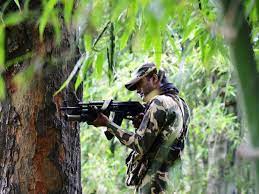The new challenge for forces in naxal areas is to use a combination of command and pressure IEDs to “Leave No Scope for Failure”
Advanced dual mechanism The most recent difficulty facing security personnel in Red Zones is IEDs, which are more costly and need for a high degree of competence.
In order to ensure that there is no room for error, Naxals, who previously used either command IED or anti-handling systems that activate explosions with pressure, are now swarmingly producing a lethal dual mechanism. Such IEDs may be particularly deadly since they provide little room for a failure strike, according to intelligence reports. Another mechanism will cause an explosion if the first one doesn’t. These IEDs are more effective and can operate wirelessly or across wires.
The top committee members’ residence is protected by these IEDs, according to ground commanders.
In a recent operation, the CRPF and local police in Burha Pahar, Jharkhand, which has been under the control of security forces for the last three decades, smashed a sizable storage of weapons.
An official letter states that on July 13, during a search operation, a group made up of three companies of the 172 Bn CRPF and Jharkhand Jaguar discovered materials needed to build IEDs, including 2.5 kg of explosives. Security personnel discovered a cable tied to an IED after thoroughly examining the area. Additionally, the researchers discovered the IED had a second mechanism for detonating an explosion, indicating a dual mechanism. 67 detonators were found by the troops at the location, revealing the number of IEDs of this kind that the Naxals planned to produce.
This incident is not unique. Security personnel in Chhattisgarh also discovered the identical twin mechanism IEDs in January while conducting search operations there.
Ground commanders stationed in Naxal districts told News18 that the rebels had previously used IEDs to defend themselves but were now using them to attack soldiers.
Such IEDs were all across Burha Pahar, which served as the headquarters of the Naxal commanders. They sought to ensure that, in the event of an invasion, this dual mechanism would set off explosions to repel the invading army. In the past, Naxals only sometimes deployed these IEDs since they cost more money. However, recent inputs and recoveries indicate that weapons may now be widely employed to target troops, a CoBRA official told News18.
Such IEDs demand a very high degree of knowledge, according to a Greyhounds Police officer, a Special Forces unit of the Andhra Pradesh and Telangana Police.
Although not all assaults involve IEDs, their recovery rates and the materials needed to manufacture them have increased. Since it needs more expertise, it seems that the Naxals have the tools necessary to prepare their hands for use against troops, the officer said.
Another CRPF officer explained the purpose of the dual mechanism by saying: “Let’s imagine Naxals planted an IED by creating foxholes. This device allows you to order a blast or manually click a button to start one. But if it doesn’t work, the explosion will be started by the vehicle’s pressure. Additionally, naxals might choose a method dependent on the circumstance. Due to the mix, it is riskier.
The most recent intelligence feed, which was provided with state and federal troops last month, indicates that Naxals would utilize dual mechanism IEDs more often as a result of their frustration with seeing their network dwindle in states.







